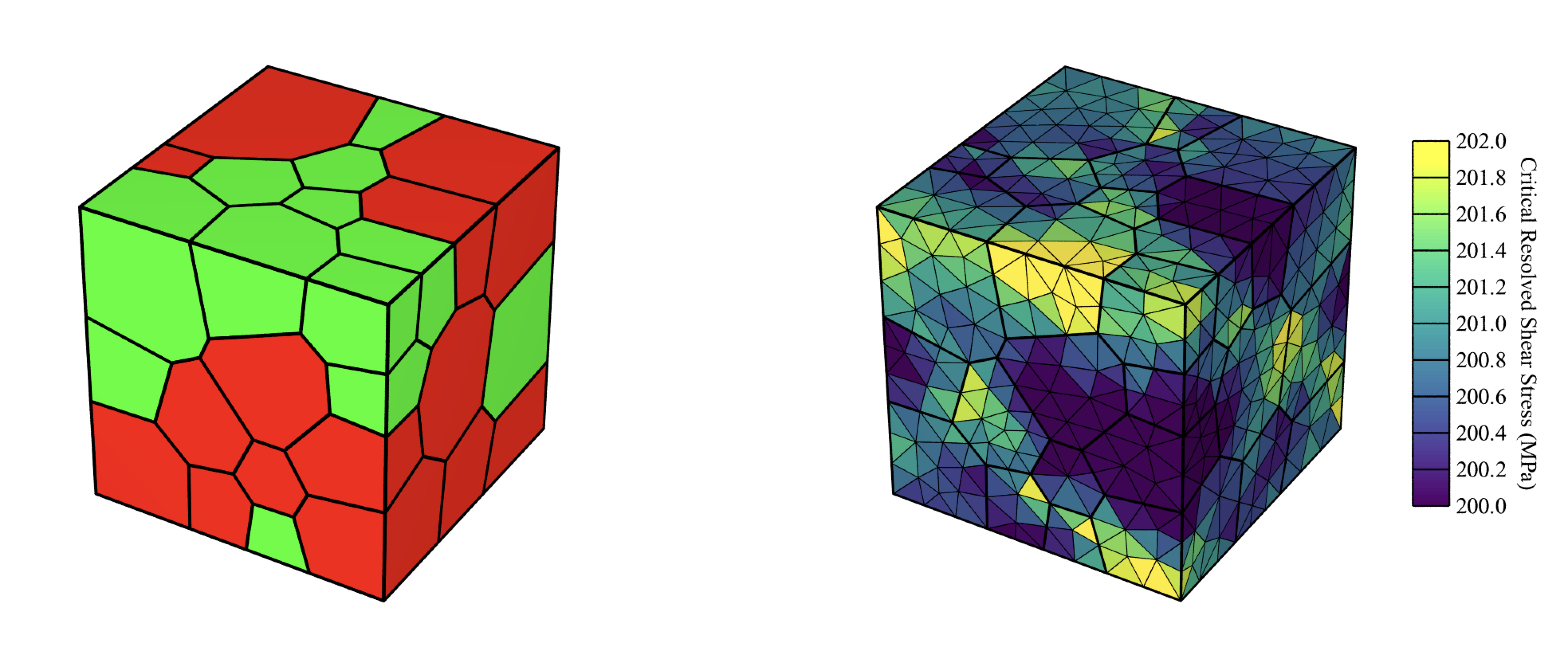[LEGACY] Multiaxial Control with Constant Load Rate
This example (tutorials/triaxCLR) covers the triaxial deformation of a dual phase FCC/BCC polycrystal (phase map shown below) at a constant load rate followed by a dwell episode and subsequent unloading. Loads are applied normal to the surface, maintaining proportional macroscopic load ratios of \(-0.375\):\(-0.625\):\(1\) for the \(x\):\(y\):\(z\) directions, respectively. Load tolerance options are prescribed. The primary loading direction is set to be in the \(z\) direction, and a dwell episode is initiated on the second step. Elemental critical resolved shear stresses and equivalent strains are output, along with the nodal coordinates and surface-integrated forces. Material parameters are those for the austenitic (\(\gamma\)) and ferritic (\(\alpha\)) phases of an LDX-2101 steel, and are provided in the tables below. Illustrations of the results are provided in the figures below.
Phase |
Type |
\(C_{11}\) [MPa] |
\(C_{12}\) [MPa] |
\(C_{44}\) [MPa] |
|---|---|---|---|---|
\(\gamma\) |
FCC |
\(204.6 \times 10^3\) |
\(137.7 \times 10^3\) |
\(126.2 \times 10^3\) |
\(\alpha\) |
BCC |
\(236.9 \times 10^3\) |
\(140.6 \times 10^3\) |
\(116.0 \times 10^3\) |
Phase |
\(m\) [-] |
\(\dot{\gamma_{0}}\) [1/s] |
\(h_{0}\) [MPa] |
\(g_{0}\) [MPa] |
\(g_{s0}\) [MPa] |
\(n\) [-] |
|---|---|---|---|---|---|---|
\(\gamma,\alpha\) |
0.02 |
1.0 |
391.9 |
200.0 |
335.0 |
1.0 |

(left) Grain and phase assignment distribution in the virtual sample. Red-colored grains are \(\gamma\)-phase and green-colored grains are \(\alpha\)-phase. (right) Elastically unloaded sample colored by critical resolved shear stress.

(left) Evolution of the macroscopic normal strains, and (right) evolution of the macroscopic stress and strain on the \(z\) surface. Note that the load rate in the \(z\) direction is always held constant during the simulation (except during the dwell episode) while the other two are automatically modified to maintain load proportionality throughout the simulation.